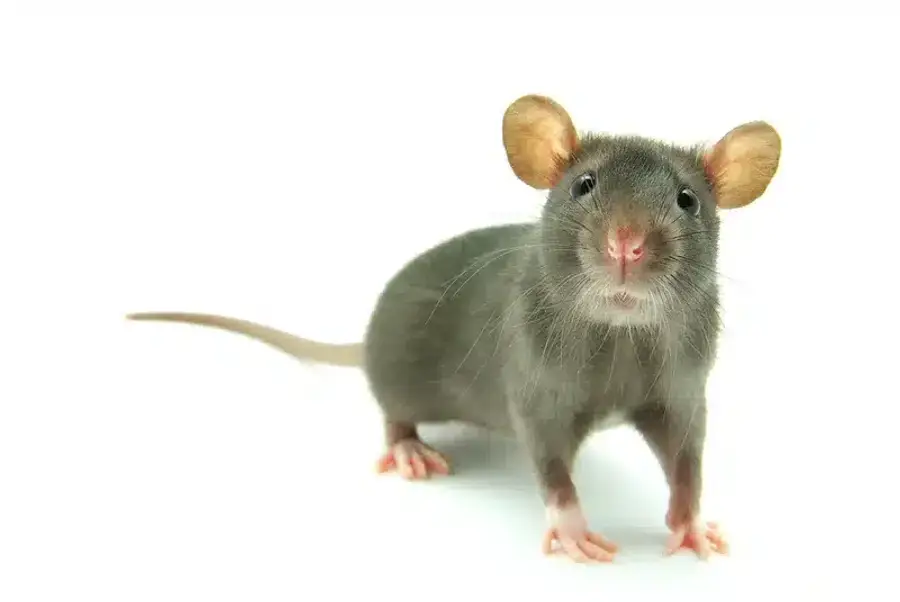If you’re asking “how do I get rid of rats in my house,” you’re not alone. In the DC metro area, especially in places like Old Town Alexandria, we get countless calls about rat problems. After nearly a decade in pest control, I’ve seen how quickly these issues can spiral out of control.
Rats aren’t just a nuisance—they’re a serious health threat. They contaminate surfaces with droppings and urine, carry dangerous diseases, and can cause thousands of dollars in damage to your home. The good news is that with the right approach, you can eliminate rats and keep them from coming back.
The Dangers of Rats in the House: Health Risks & Why You Need to Get Rid of Them
When homeowners ask “how do I get rid of rats in my house,” they’re often focused on the immediate problem. But understanding the health risks helps you see why acting quickly is so important.
Rats carry multiple diseases that can seriously harm your family. Leptospirosis spreads through rat urine and can cause kidney failure and meningitis. Hantavirus comes from breathing in contaminated dust from rat droppings—something that happens more often than people realize.
Additionally, rats spread rat-bite fever, which has a 10% fatality rate if left untreated. They also carry fleas that can transmit murine typhus, and their urine contains proteins that trigger severe asthma attacks in children.
Every surface rats touch becomes contaminated. Their droppings and urine create health hazards throughout your home, making proper cleanup essential for your family’s wellbeing.
How to Identify a Rat Infestation in Your House
Before you can figure out how do I get rid of rats in my house, you need to confirm you actually have rats. Many homeowners confuse mice vs rats, which require different treatment approaches.
Rat droppings are about half an inch long and capsule-shaped, much larger than mouse droppings. You’ll typically find them along walls, in cabinets, and near food sources.
Look for gnaw marks on food packages, walls, and especially electrical wires. Rats’ teeth never stop growing, so they constantly chew to keep them manageable.




Rub marks appear as dark, greasy smudges along walls where rats repeatedly travel the same paths. These marks become more obvious over time as oils from their fur build up.
Listen for scratching sounds in walls, especially at night when rats are most active. Unlike mice, rats make heavier, more pronounced noises when they move around.
Common Rat Entry Points: Where and How Rats Enter Your Home
Understanding where rats enter helps answer “how do I get rid of rats in my house” because prevention is crucial for long-term success. In my experience, most people focus on the wrong areas entirely.
Rats can squeeze through openings as small as a quarter. They commonly enter through gaps under doors, holes around utility lines, and damaged crawl space vents. Many homes in older neighborhoods like Arlington and Alexandria have multiple entry points.
Foundation cracks and gaps where utilities enter your home are prime entry spots. Rats also get in through damaged door sweeps, gaps in garage doors, and holes in exterior walls.
Roof access is another common problem, especially with Norway rats. They climb trees, power lines, and building exteriors to reach roof areas where they can find entry points.
The key is identifying all potential entry points before sealing them. That’s why professional inspection is so valuable—we know exactly where to look.
How Do I Get Rid of Rats in My House: Step 1 - Inspection & Monitoring
The first step in answering “how do I get rid of rats in my house” is a thorough inspection. Skip this step, and you’ll likely waste time and money on ineffective treatments.
Map out where you find droppings, gnaw marks, and other signs of activity. These “hot spots” tell you where rats are most active and where treatment will be most effective.
Check food sources like pet food, bird seed, and pantry items. Rats need consistent food and water access, so identifying these sources helps you understand what’s drawing them in.




Look for harborage areas where rats feel protected. Excessive clutter, dense vegetation like English ivy, and undisturbed storage areas all provide ideal hiding spots.
Document everything you find. This information guides your treatment strategy and helps you track progress over time.
How Do I Get Rid of Rats in My House: Step 2 - Sanitation & Resource Reduction
Sanitation might not seem exciting, but it’s essential for getting rid of rats in your house effectively. According to recent research, food subsidies and structural harborage are the primary drivers of urban rat populations.
Remove food sources by storing all food in rodent-proof containers with tight-fitting lids. This includes pet food, bird seed, and pantry items that rats commonly target.
Control garbage by placing trash curbside only on pickup day, not the night before. Use tight-fitting lids on garbage cans and clean up any spilled food immediately.
Eliminate water sources like leaky pipes, standing water, and overflowing gutters. Rats need water daily, so removing these sources forces them to look elsewhere.
Reduce harborage by cutting back dense vegetation, removing clutter from storage areas, and elevating firewood at least 12 inches off the ground.
These steps make your property less attractive to rats and improve the effectiveness of control measures.
How Do I Get Rid of Rats in My House: Step 3 - Exclusion & Rat-Proofing Tips
Exclusion work answers the long-term part of “how do I get rid of rats in my house.” However, timing is crucial—seal entry points too early and you might trap rats inside.
Hardware cloth with quarter-inch mesh works best for covering crawl space vents and larger openings. Regular screen mesh isn’t strong enough because rats will chew right through it.
Steel wool and silicone combinations work well for smaller gaps around utility penetrations. The steel wool provides a physical barrier while silicone seals the area.
Door sweeps and weather stripping eliminate gaps under doors and around windows. Many homes have surprising gaps that rats exploit.
Metal kick plates under doors prevent rats from gnawing through wood. This is especially important for garage doors and exterior entryways.
Wait until you’ve controlled the active population before completing exclusion work. Otherwise, you might create bigger problems by forcing rats deeper into your home.
How Do I Get Rid of Rats in My House: Step 4 - Baiting & Trapping Strategies
This step directly tackles the active rat population. In my experience, proper baiting and trapping techniques make the biggest difference in how quickly you solve the problem.
Tamper-resistant bait stations are essential for exterior baiting. The EPA requires these for any above-ground outdoor placement, and they protect children, pets, and non-target animals.
Inside your home, snap traps work better than bait stations for rats. When rats eat poisoned bait indoors, they often die in walls or other inaccessible areas, creating terrible odor problems.
Bait placement matters more than bait type. Set traps perpendicular to walls with the trigger side against the wall. Rats naturally travel along edges, making this placement most effective.
Multiple trap types sometimes work better than sticking to one approach. Experiment with different baits like peanut butter, dried fruit, or even candy to see what your local rat population prefers.
For detailed information about different types of rats and how their behavior affects treatment strategies, understanding species-specific habits helps improve results.
Do Ultrasonic Devices or Home Remedies Really Get Rid of Rats?
When people ask “how do I get rid of rats in my house,” they often hope for quick, easy solutions. Unfortunately, most home remedies don’t work despite what you might read online.
Ultrasonic devices produce high-frequency sounds that supposedly repel rats. However, rats quickly adapt to these sounds, and furniture and walls block the sound waves, making them largely ineffective.
Essential oils like peppermint oil are often suggested as natural repellents. While rats might avoid these scents temporarily, they don’t provide long-term control and definitely won’t eliminate an existing infestation.
Mothballs are sometimes recommended, but they’re not EPA-approved for rat control and can be dangerous to humans and pets. Plus, they simply don’t work against determined rats.
Steel wool alone won’t stop rats either. They can chew through it if not properly combined with other materials and techniques.
These methods waste valuable time while rat populations continue growing. Professional-grade materials and techniques provide much better results.
Exterminator vs DIY: The Cost of Getting Rid of Rats in My House
Cost is always a factor when deciding how do I get rid of rats in my house. While DIY approaches seem cheaper initially, they often end up costing more in the long run.
DIY costs include traps ($5-15 each), bait stations ($10-25), rodenticides ($15-30), and exclusion materials ($50-200). However, these costs add up quickly, especially when initial attempts fail.
Professional treatment typically costs more upfront but includes expertise, commercial-grade materials, and ongoing support. Most importantly, professionals know how to identify why treatments fail and adjust accordingly.
Hidden DIY costs include replacing contaminated insulation, repairing electrical damage, and dealing with health issues from improper cleanup. These problems often cost thousands more than professional treatment.
Time factor matters too. DIY approaches often take months to show results, during which rat populations can double or triple. Professional treatment typically shows results within weeks.
For current pricing information, check our guide on exterminator cost to understand what professional rat control typically involves.
Better Termite & Pest Control’s Unique 4-Step Rodent Protocol
After nearly a decade treating rats in the DC metro area, we developed a specific protocol that addresses the unique challenges in our region. This system works especially well in areas like Old Town Alexandria where traditional approaches often fail.
Step 1: Complete inspection identifies all hot spots, entry points, and contributing factors. We don’t just look for obvious signs—we examine the entire property to understand why rats chose your home.
Step 2: Strategic baiting using tamper-resistant stations placed near active areas. We use commercial-grade baits that aren’t available to consumers and adjust placement based on rat behavior patterns.
Step 3: Follow-up visits at one and three weeks monitor progress and adjust strategies. This is where many DIY approaches fail—without proper monitoring, you can’t tell if treatments are working.
Step 4: Long-term maintenance prevents re-infestation through tri-annual visit (three times per year)s. This addresses the biggest weakness in most rat control programs—keeping rats from coming back.
This protocol has proven effective across hundreds of properties in our service area, providing reliable results where other approaches have failed.
Why Re-Insulating Your Attic Rarely Solves a Rat Problem
One of the biggest misconceptions I encounter is that attic re-insulation is necessary to solve rat problems. Many companies push this expensive service, but it rarely addresses the actual issue.
Rats are active at lower levels where they find food and water. They use attics for nesting but removing contaminated insulation doesn’t eliminate the population or prevent re-infestation.
Entry points remain open even after insulation replacement. Without proper exclusion work at ground level, new rats simply move back in and contaminate fresh insulation.
Cost vs. benefit doesn’t add up in most cases. Attic re-insulation can cost thousands of dollars while providing minimal impact on rat control. That money is better spent on effective baiting and exclusion.
Focus on active areas instead. Successful rat control targets where rats actually live and travel—basements, crawl spaces, and ground-level entry points.
Complete attic work might be necessary in extreme cases, but it should never be the primary solution for rat control.
Integrated Pest Management (IPM): How to Prevent Rats Long-Term
Integrated Pest Management represents the gold standard for rat control. This EPA-endorsed approach combines multiple strategies for maximum effectiveness.
Monitoring and identification form the foundation of IPM. Regular inspections catch problems early when they’re easier to control.
Prevention measures including sanitation and exclusion work address root causes rather than just treating symptoms. This approach provides longer-lasting results.
Control methods are selected based on specific situations and adjusted as needed. IPM doesn’t rely on a single solution but adapts to changing conditions.
Evaluation and adjustment ensure treatments remain effective over time. What works initially might need modification as conditions change.
This comprehensive approach costs more initially but provides better long-term value by preventing recurring infestations.
Legal & Code Requirements for Rodent Control in VA, MD & DC
Many homeowners don’t realize that rat control isn’t just about comfort—it’s often a legal requirement. Understanding these obligations helps motivate proper treatment.
Virginia regulations under 12VAC5-450-130 mandate elimination of rodent breeding sites in certain facilities. Municipal codes often assign specific responsibilities to property owners.
Maryland’s Minimum Livability Code requires structures to be kept free from rodent harborage under penalty of fines and repair orders. Counties like Baltimore impose civil fines from $125 to $1,000 for non-compliance.
DC Health’s Rodent & Vector Control Division conducts public property baiting and enforces trash storage requirements. They also require petitions for baiting on private properties.
These regulations exist because rats pose genuine public health risks. Compliance protects both your family and your community.
Customer Success Story: How We Got Rid of Rats in an Old Town Alexandria Home
Recently, we helped a family in Old Town Alexandria who had struggled with rats for months. Their previous company had recommended $8,000 in attic work, but the problem persisted.
Our inspection revealed the real issues: multiple ground-level entry points, improperly stored pet food, and dense English ivy providing harborage. The attic contamination was a symptom, not the cause.
We implemented our 4-step protocol, focusing on strategic baiting at active areas and proper exclusion work. Within three weeks, rat activity dropped dramatically.
The total cost was less than half of the previous company’s attic recommendation, and the results lasted. Six months later, quarterly maintenance visits show no new activity.
This case perfectly illustrates why understanding rat behavior and focusing on root causes provides better results than expensive but irrelevant solutions.
Understanding how long do rats live helps explain why quick intervention is so important for preventing large infestations.
Frequently Asked Questions
How long does it take to get rid of rats?
+
Most rat infestations show significant improvement within 2-3 weeks with proper treatment. However, complete elimination typically takes 4-6 weeks depending on the size of the population and environmental factors. Properties with multiple food sources or extensive harborage areas may take longer to clear.
What kills rats instantly?
+
Snap traps provide the quickest lethal control when properly placed and baited. Electric traps also work quickly but cost more. While some people ask about instant poisons, these create serious problems including odor from rats dying in walls and potential harm to pets or children.
Can I get rid of rats without poison?
+
Absolutely. Snap traps, exclusion work, and sanitation measures can eliminate rat populations without any rodenticides. This approach takes more time and effort but avoids concerns about secondary poisoning of pets or wildlife. Many homeowners prefer non-poison methods for properties with children or pets.
How do I stop rats from coming back?
+
Long-term prevention requires ongoing sanitation, regular monitoring, and maintenance of exclusion work. Store all food in rodent-proof containers, eliminate water sources, and inspect entry points quarterly. Professional maintenance programs provide the most reliable prevention because they catch new problems before they become infestations.
Are ultrasonic rat repellents effective?
+
Ultrasonic devices provide little to no long-term control. Rats quickly adapt to the sounds, and walls and furniture block the sound waves. Multiple university studies have shown these devices don't significantly reduce rat populations. Professional-grade baits and traps provide much more reliable results.
How much does it cost to hire an exterminator for rats?
+
Professional rat control typically costs $200-600 for initial treatment, depending on property size and infestation severity. Ongoing maintenance runs $75-150 per tri-annual visit (three times per year). While this seems expensive compared to DIY options, professional treatment usually works faster and prevents costly damage from prolonged infestations. For detailed pricing information, visit our [pest control cost guide](/how-much-does-pest-control-cost/).
With five years of hands-on experience in the pest control industry, George Schulz is a registered technician with the Virginia Pest Management Association and a proud third-generation professional in a family business that's been protecting homes for over 57 years. He manages and trains a team of service pros while also leading internal research efforts—recently spearheading a deep-dive review of thousands of documents on pest control materials to hand-pick the most kid and pet friendly, most effective solutions tailored specifically for homes in the DC metro area.
